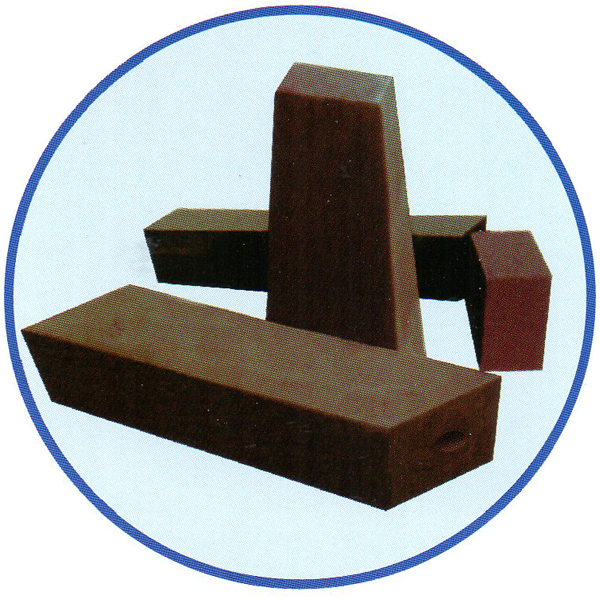Corundum-spinel refractory materials affect the thermal shock stability. Light burnt powder
At present, corundum-spinel ladle ventilation elements are widely used due to their excellent anti-erosion and corrosion resistance properties, but their thermal shock stability is poor, which limits the further improvement of their life cycle. There are many factors influencing the thermal shock stability of corundum-spinel materials. This article introduces the effects of spinel types, binders, additives, and firing temperature on the thermal shock stability of materials. The thermal shock stability evaluation adopts three thermal shock methods of 1100℃ air cooling, 1300℃ air cooling and 1000→1600C temperature cycle, focusing on the thermal shock method of 1000~1600℃ temperature cycle.
According to the influence of the firing temperature on the thermal shock stability test of the sample, the corundum-spinel sample has the flexural strength after three thermal shocks of 1100℃ air cooling, 1300℃ air cooling and 1000~1600℃ temperature cycle. It is basically consistent with the change of strength retention rate with firing temperature, that is, as the firing temperature increases, the flexural strength and strength retention rate of the sample after thermal shock increase first, and the resistance of the sample fired at 1650℃ The flexural strength retention rate decreased slightly, and the firing temperature continued to increase. The flexural strength and retention rate of the sample fired at 1700°C after thermal shock decreased sharply, and the flexural strength retention rate of the sample fired at 1600°C was high.

According to the test parameters of the two thermal shock stability of the sample after firing at different temperatures. It can be seen that the main thermal shock damage process of the corundum-spinel ladle breathable element is thermal shock damage, that is, the damage is mainly caused by the propagation of cracks.
The main phase composition of the corundum-spinel sample combined with pure calcium aluminate cement after firing is corundum, spinel and calcium hexaaluminate (CA6), so the firing temperature affects the thermal shock stability of this type of material It should be related to the changes in these phases in the sample and the resulting structural changes.
According to the test microscopic results of the samples fired at 1450°C, it can be seen that in the samples fired at 1450°C, CA6 is scattered in the form of small hexagonal plate crystals, the bonding strength between the matrix is low, and the structure is loose. The porosity is high, the bulk density is small, and the flexural and compressive strength at room temperature are low. From the fracture morphology of the sample T1 after thermal shock, it can be seen that the cross section is convex and concave, and each crystal presents a relatively complete three-dimensional morphology, mainly along the grain fracture. This kind of cracks extending along the grain will cause Large cracks are formed, resulting in thermal shock damage to the sample, low flexural strength retention, and poor thermal shock stability.
According to the microscopic results of the fired sample T3, it can be seen that the CA6 crystal form in the sample is obviously developed and thickened, showing a thick plate-like crystal shape, interspersed between the corundum phase or the spinel phase, and strengthens the inter-grain The combination of, improves the microstructure of the sample and forms a more obvious network interwoven structure, which is beneficial to the improvement of the thermal shock stability of the material.
Al2O3 in the spinel with a proper degree of dissolution can improve the thermal shock stability of the sample. From the morphology of the spinel grains of solid solution Al2O3, it can be seen that the surface of the spinel grains has a convex structure. This is because Al2O3 dissolves in the spinel during the high-temperature firing process, and during the free cooling process, Al2O3 segregates in the form of corundum and is distributed in the spinel grain boundaries. On the one hand, the raised structure can play a role in pinning or deflecting cracks, preventing crack propagation or changing the direction of crack propagation. At the same time, the reaction of solid solution Al2O3 precipitation in the form of corundum has a direct bonding effect to some extent And it can strengthen the bonding structure and increase the fracture energy of the sample. On the other hand, because the linear expansion coefficient of the solid solution Al2O3 spinel is reduced, it forms a suitable linear expansion coefficient mismatch with the corundum phase, resulting in a microcrack energy dissipation mechanism At the same time, the bonding strength between the matrices is enhanced, and the fracture work of the sample is increased, which improves the thermal shock stability of the sample. From the fracture morphology of the sample after T3 thermal shock, it can be seen that the entire section tends to be smooth to penetrate the crystal. Mainly grain fracture.
Properly dissolve together and precipitate on the surface of the spinel grains during cooling to form a convex structure, which has a pinning or deflection effect on the propagation of cracks, and enhances the bonding strength between the substrates. The fracture work of the sample increases, which is beneficial to heat Improved seismic stability.
Yingkou Dingfeng Metallurgical Technology Co., Ltd.
18041722333
Contact: Mr. Zhang
Telephone: 18041722333
Mail box: 810678900@qq.com
Address: Liangjunzhai Village, Yong'an Town, Dashiqiao City, Yingkou City, Liaoning Province

QR code